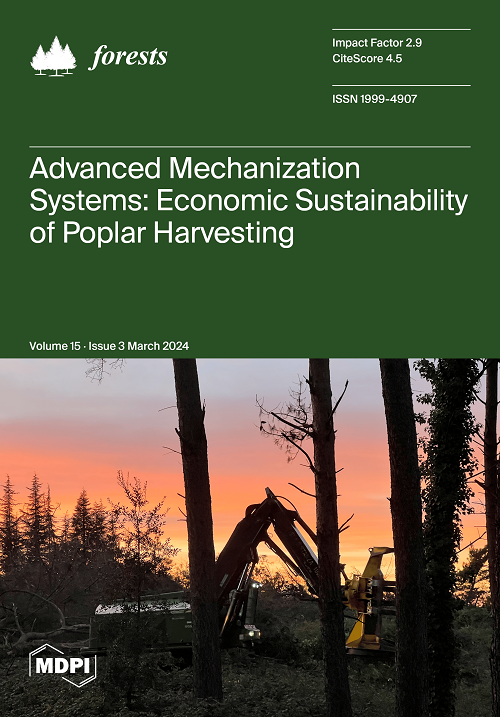中国群落土地模型模拟比叶面积的评价:对模型总初级生产力的影响
IF 2.4
2区 农林科学
Q1 FORESTRY
引用次数: 0
摘要
比叶面积(SLA)是与获得光的能力相关的关键叶片功能性状。群落土地模型(CLM)和类似的陆地生物圈模型尚未很好地描述SLA的实质性变化。这些SLA变化如何影响总初级生产力(GPP)的模拟尚不清楚。在此,我们评估了CLM4.5与中国观测数据之间的SLA不匹配,并量化了由观测数据和7个陆地生物圈模式的默认值计算的SLA变化对使用CLM4.5模拟的GPP的影响。结果表明,CLM4.5倾向于高估冠层顶部和梯度的SLA值。较高的默认SLA值可能导致模拟的GPP对温带针叶常绿树(NET)、温带阔叶落叶树(BDT)和C3草的低估5-161 g cm−2 yr−1(1%-7%),而对温带阔叶常绿树(BET)的高估50 g cm−2 yr−1(2%)。此外,在14种植物功能类型(pft)中,观察到的物种间SLA差异在21% ~ 59%之间,这与不同模型间默认SLA值的差异(9% ~ 60%)相似。这些SLA变化将导致温带NET和温带BET模型GPP的变化比温带BDT和C3草(2%-9%)大7%-19%。我们的研究表明,陆地生物圈模式应考虑到植物生长密度的种间变化及其对环境因子的响应;否则,对生态系统生产力的预测将产生重大偏差。本文章由计算机程序翻译,如有差异,请以英文原文为准。
Evaluation of the Community Land Model-Simulated Specific Leaf Area with Observations over China: Impacts on Modeled Gross Primary Productivity
Specific leaf area (SLA) is a key leaf functional trait associated with the ability to acquire light. Substantial variations in SLA have not been well described in the community land model (CLM) and similar terrestrial biosphere models. How these SLA variations influence the simulation of gross primary productivity (GPP) remains unclear. Here, we evaluated the mismatch in SLA between the CLM4.5 and observed data collected from China and quantified the impacts of SLA variation calculated from both observations and the default values across seven terrestrial biosphere models on modeled GPP using CLM4.5. The results showed that CLM4.5 tended to overestimate SLA values at the top and gradient of the canopy. The higher default SLA values could cause an underestimation of the modeled GPP by 5–161 g C m−2 yr−1 (1%–7%) for temperate needleleaf evergreen tree (NET), temperate broadleaf deciduous tree (BDT), and C3 grass and an overestimation by 50 g C m−2 yr−1 (2%) for temperate broadleaf evergreen tree (BET). Moreover, the observed SLA variation among species ranged from 21% to 59% for 14 plant functional types (PFTs), which was similar to the variation in default SLA values across models (9%–60%). These SLA variations would lead to greater changes in modeled GPP by 7%–19% for temperate NET and temperate BET than temperate BDT and C3 grass (2%–9%). Our study suggested that the interspecific variation in SLA and its responses to environmental factors should be involved in terrestrial biosphere models; otherwise, it would cause substantial bias in the prediction of ecosystem productivity.
求助全文
通过发布文献求助,成功后即可免费获取论文全文。
去求助
来源期刊

Forests
FORESTRY-
CiteScore
4.40
自引率
17.20%
发文量
1823
审稿时长
19.02 days
期刊介绍:
Forests (ISSN 1999-4907) is an international and cross-disciplinary scholarly journal of forestry and forest ecology. It publishes research papers, short communications and review papers. There is no restriction on the length of the papers. Our aim is to encourage scientists to publish their experimental and theoretical research in as much detail as possible. Full experimental and/or methodical details must be provided for research articles.
 求助内容:
求助内容: 应助结果提醒方式:
应助结果提醒方式:


